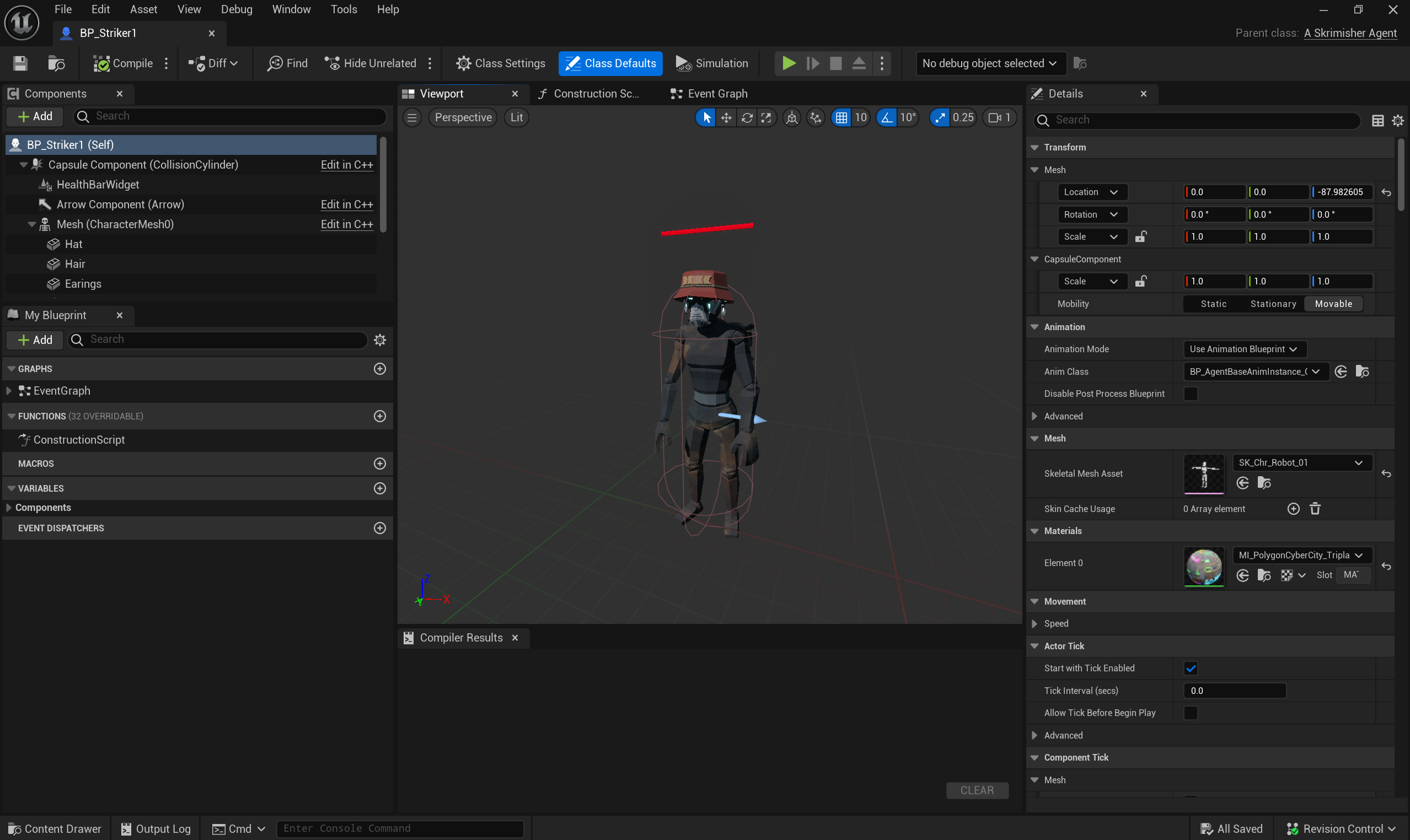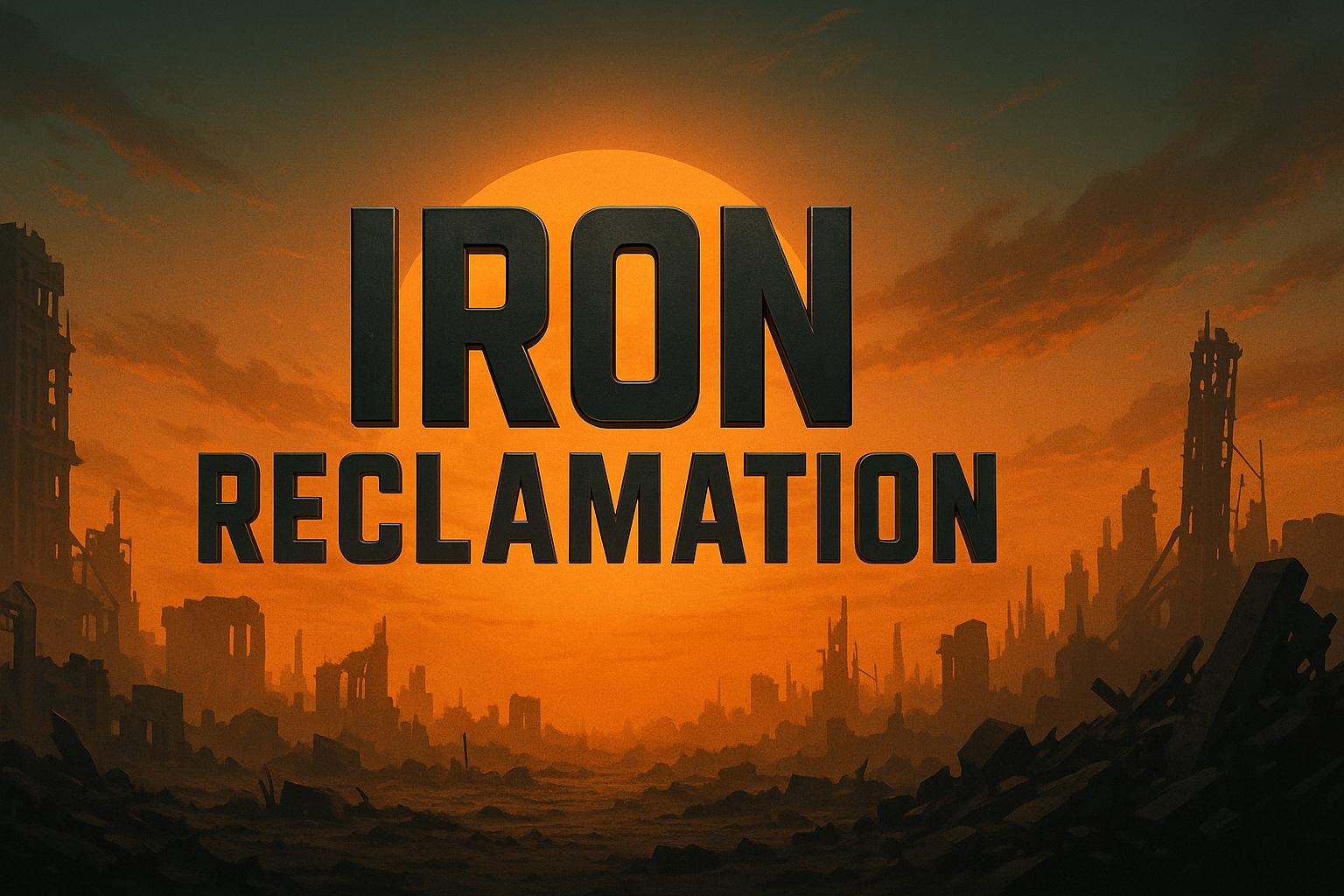When Customization Gets Complicated: Working with Character Assets in Unreal

For this sprint, I shifted focus from menus and UI to something that felt more visual and exciting — character creation. Specifically, I wanted to start using the characters and models that came with the Unreal Engine asset pack we imported for Iron Reclamation.
At first, I thought this would be a quick plug-and-play process: pick a base model, swap a few parts, maybe change a few materials.
What seemed like a simple customization task turned into one of the most time-consuming and detail-heavy parts of the project so far.
Learning the Hard Way: Asset Limitations
The first thing I learned is that limited assets mean limited freedom. The pack came with a solid range of characters and props enough to get a prototype running but not nearly enough to build truly unique variants.
When you only have a handful of meshes or textures to work with, every change has to be intentional. You can mix and match, but at some point, all your characters start to feel like cousins rather than individuals.
It really made me appreciate just how much detail goes into modular character design. Having “many parts” doesn’t automatically mean “infinite options” — sometimes it just means more complexity to manage.
The Devious Mechs

The biggest test was building one of our boss enemies — a large mech built from over 57 individual pieces. Every piece was modular, which sounds awesome on paper… until you start customizing it.
Each time I updated a material, repositioned a joint, or swapped a texture, that change rippled through the entire asset set. Since everything referenced the same source files, modifying one component could affect all the others.
To avoid breaking the original, I had to duplicate every part, rename it, and tweak each one manually. That meant:
- Copying each segment I needed
- Making sure the copied mesh was independent
- Re-applying all the materials or transforms
- Re-importing it into the hierarchy
Even after that, Unreal sometimes refused to recognize the updated versions meaning I’d still have to reapply adjustments after placing them.
The process wasn’t hard, but it was tedious, like assembling a 3D jigsaw puzzle where every piece could suddenly update itself without warning.
Behind the Scenes: How I Managed It
To keep the chaos under control, I started organizing everything into folders by category — armor, joints, panels, weapons, and so on. Each duplicated piece was renamed and logged, so if something broke later, I could find and fix it fast.
I also learned the value of incremental saves. Whenever I finalized a version of a character or mech, I saved a snapshot before making more changes. It sounds basic, but it saved me from having to redo hours of work when Unreal decided to revert a material reference or lose a link.
Lessons Learned in Customization and Patience
This sprint taught me that character work isn’t just art it’s organization. Here’s what stood out most:
- Every asset has dependencies. Changing one mesh can affect everything tied to it.
- Duplication isn’t always enough. Some references stay linked no matter what, so double-check your hierarchy.
- Small changes take big time. Adjusting a single part of a modular character can lead to a whole new round of fixes.
- Tedious ≠ pointless. Even though it felt repetitive, the end result was a more refined, modular boss design that can now be updated safely.
Looking Ahead
Next, I plan to:
- Experiment with material swaps and decals to create quick visual differences without editing meshes.
The foundation is finally set — messy, but reliable.
Final Thoughts
This week reminded me that game development is full of invisible effort. It’s not always about flashy gameplay systems or cool effects — sometimes it’s just about making sure the right arm plate doesn’t overwrite the leg texture when you hit “Save.”
Even with all the small frustrations, seeing the mech finally assembled and functional made it worth it. It’s progress you can feel — one piece at a time.
Get Iron Reclamation
Iron Reclamation
| Status | Prototype |
| Author | LGHTS |
| Tags | First-Person, Real time strategy, Singleplayer |
More posts
- Making Combat Feel Good: Fair, Readable, and Responsive AI23 days ago
- Problems With Transferring Materials From One Mesh to Another Mesh23 days ago
- Some Tips for UE523 days ago
- Hitting the "Impossible" Deadline: How 5 Programmers Used Process to Beat the Cl...23 days ago
- Bone to Bone: Animation Trouble29 days ago
- When a Simple Menu Isn’t So Simple: Building an Options Menu in Unreal29 days ago
- Better Isn't Always Best: Choosing the Right Tool Under a Sprint Deadline29 days ago
- From Continent to Contained: Learning to Build a World That Works30 days ago
- Perfection Isn't Perfect31 days ago

Leave a comment
Log in with itch.io to leave a comment.